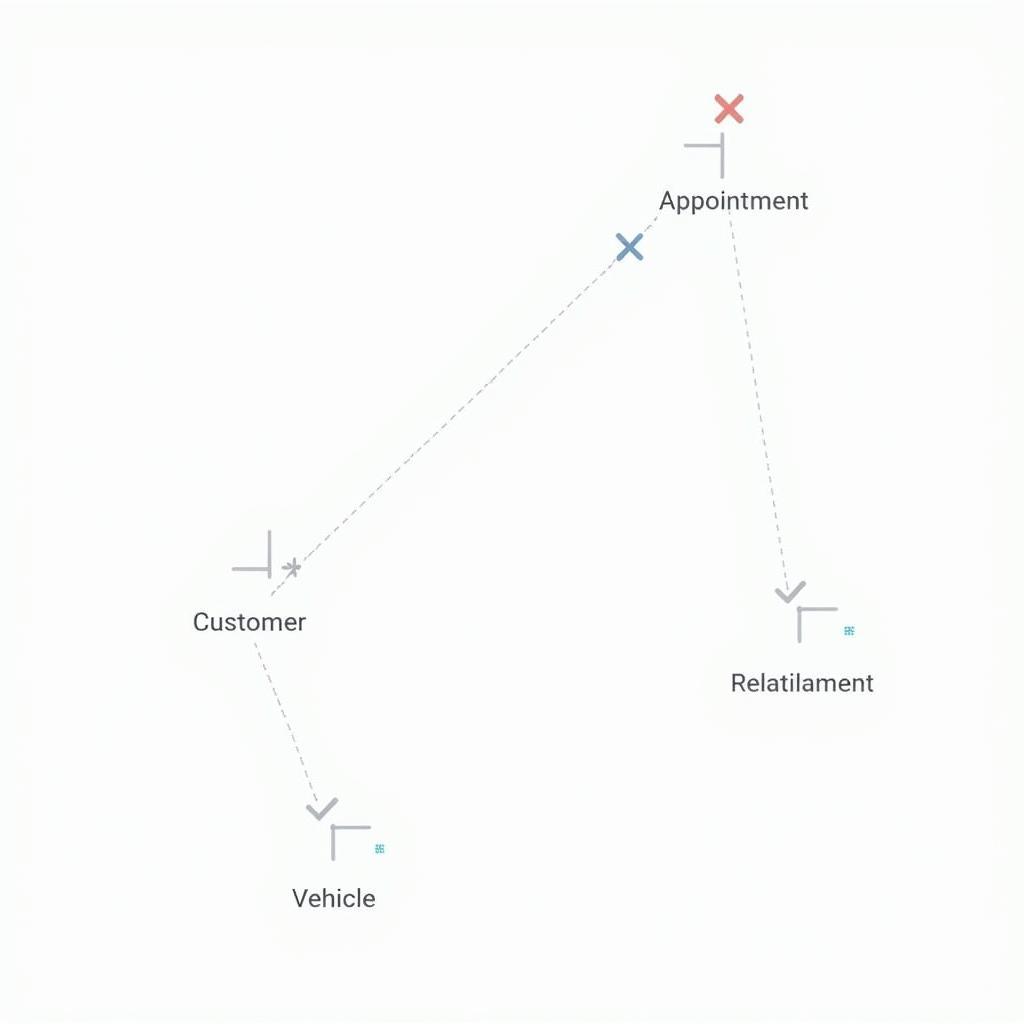An entity relationship diagram (ERD) for car service is a visual representation of how different data entities relate to each other within a car service business. It provides a structured blueprint for a database, ensuring data integrity and efficient information management. This is crucial for modern car service operations, from scheduling appointments to tracking inventory and managing customer relationships.
Why is an ERD Essential for Car Service Businesses?
A well-designed ERD is crucial for several reasons. It helps to streamline operations by clarifying how data is organized. This allows for easier data retrieval and analysis, leading to better decision-making. Moreover, it promotes efficient communication among team members by providing a common understanding of the data structure. Ultimately, a robust ERD improves customer satisfaction by enabling faster service and personalized experiences.
Key Entities in a Car Service ERD
Several key entities are typically included in a car service ERD. These entities represent the core components of the car service operation and their relationships determine how information flows within the system. Some of the most common entities include:
- Customer: Stores information about the car owner, including contact details, vehicle information, and service history.
- Vehicle: Details about the car being serviced, such as make, model, year, and VIN.
- Service: Information about the services offered, including pricing, labor time, and required parts.
- Mechanic: Details about the mechanics employed, such as their specialization and availability.
- Appointment: Information about scheduled service appointments, including date, time, and services requested.
- Inventory: Details about parts and supplies, including quantity on hand and reorder points.
Building an Effective ERD for Your Car Service
Building an effective ERD requires careful planning and consideration of the specific needs of your car service business. Begin by identifying all the relevant entities, as mentioned above. Next, define the relationships between these entities. For example, a customer can have multiple vehicles, and each vehicle can have multiple service appointments. These relationships are represented by lines connecting the entities, with symbols indicating the type of relationship (one-to-many, many-to-many, etc.).
Defining Relationships between Entities
Clearly defining relationships is critical for a functional ERD. Understanding the cardinality of these relationships – one-to-one, one-to-many, or many-to-many – ensures accurate data representation and efficient database design. For example, one mechanic can work on many vehicles, but one vehicle is typically serviced by one mechanic at a time during a specific appointment.
Benefits of Using an ERD in Car Service
Using an ERD provides numerous benefits, from streamlined operations to improved customer service. It creates a clear picture of data flow, leading to better data management and analysis. This, in turn, allows for better decision-making regarding inventory management, staffing, and service offerings. An ERD also facilitates better communication among team members, ensuring everyone understands the data structure and its implications.
Improving Efficiency and Customer Satisfaction
A well-structured ERD can significantly enhance efficiency and improve customer satisfaction. By streamlining data access and retrieval, it enables faster service and quicker response times to customer inquiries. This allows for a more personalized customer experience, leading to greater customer loyalty and positive word-of-mouth referrals.
“A well-designed ERD is the backbone of any successful car service business,” says John Smith, Senior Database Architect at AutoTech Solutions. “It provides a clear roadmap for data management, enabling efficient operations and improved customer service.”
Conclusion
An entity relationship diagram (ERD) is a powerful tool for any car service business. By clearly defining the relationships between different data entities, it enables efficient data management, streamlined operations, and ultimately, increased customer satisfaction. Investing in a well-designed ERD is an investment in the future of your car service business. Understanding and implementing a comprehensive ERD will be a critical success factor for your business.
FAQ
- What is the purpose of an ERD for car service?
- What are the key entities in a car service ERD?
- How do I create an ERD for my car service?
- What are the benefits of using an ERD?
- What software can I use to create an ERD?
- How do I maintain and update my ERD?
- What is the relationship between an ERD and a database?
Need help with your car service ERD? Contact us via WhatsApp: +1(641)206-8880, Email: [email protected]. We have a 24/7 customer support team.


